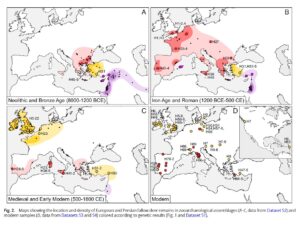New and interesting facts and patterns reflecting different aspects of the evolution and distribution of the оьввду deer are presented in two papers published in the prestigious scientific journals PNAS and Nature’s Scientific Reports.
The findings are the result of a complex methodology combining the application of genetic markers and palaeontological data. Leading palaeogeneticists, archaeozoologists and palaeontologists include Prof. Nikolai Spassov from the National Museum of Natural History at BAS (NMNHS-BAS) who is among the authors who formulated the concept of the study. The migration routes of the species after the last glaciations and in the interglacial periods have been studied. The role of man in the dispersal of the species is demonstrated as well as the importance of this deer for hunting, lifestyle and cultural life of former societies, since prehistoric times.
The results confirm Prof. Spassov’s assumption that in Europe only in the Balkans a local population from the Ice Age has survived. It was extirpated by overhunting only at the end of Antiquity – the beginning of the Middle Ages. New research shows that it was from this population that the Romans translocated the species as far as Britain.
On the maps: distribution of fallow deer populations different by origin and gene pool
In red – samples originating from the extinct autochthonous Balkan population of the Fallow Deer (Dama dama) ; in yellow – samples originating from the modern Asia Minor population of D. dama. In purple – distribution of the Persian species of fallow deer (D. mesopotamica).
From Baker et al. 2024 in: PNAS 2024 Vol. 121 No. 8 e2310051121






